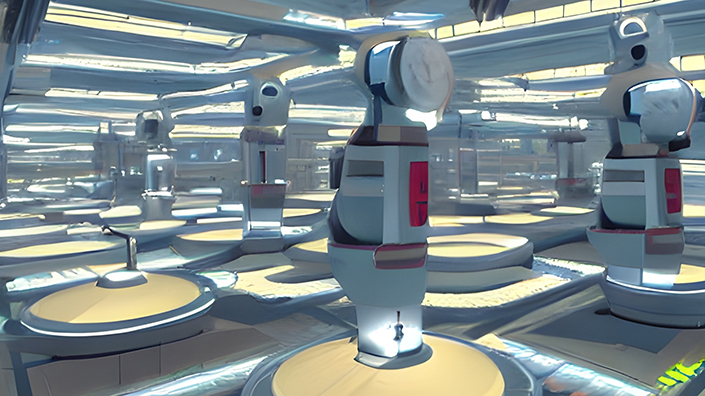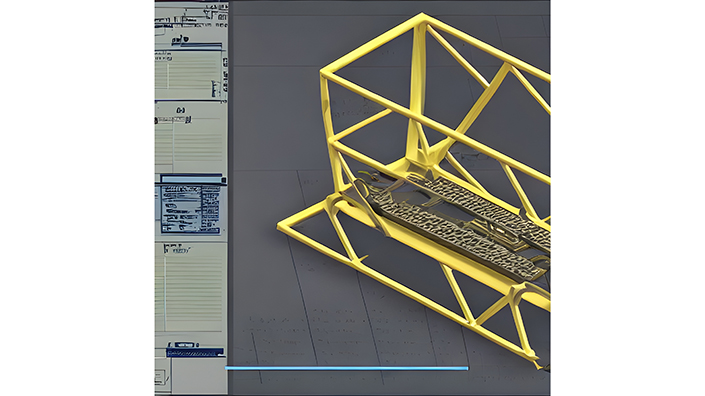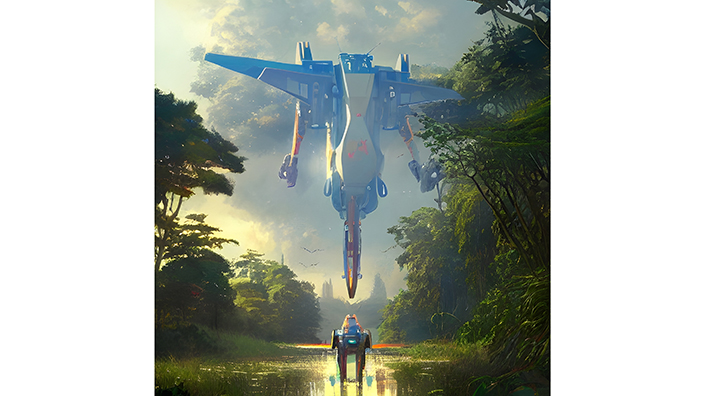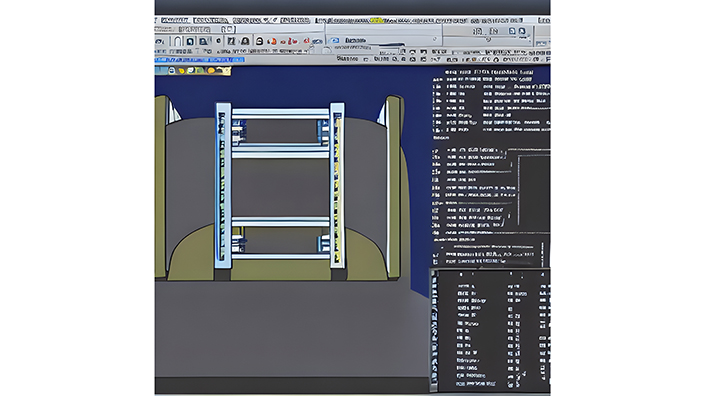By this point, nearly everyone is familiar with the AI tools that started trickling out late last year, and seem to gain new capabilities each week. ChatGPT, which launched on 30 November, is the best known.
“I don't even think the most hardened tech journalists were quite expecting something as profoundly different as ChatGPT,” says King. “It really is like stepping five or 10 years into the future almost overnight, and its capability – without being too hyperbolic – will drive an absolute explosion in terms of what we're going to see.”
Applications of such chatbots, based on large language models (LLM), can seem practically unlimited. From the relatively mundane – writing shopping lists and travel itineraries – to the more radical – formulating entire business plans and executing them, writing scripts in the style of specific authors, even instructing other AIs on complex tasks – ChatGPT and equivalents such as Microsoft’s Bing and Google’s Bard are revolutionising the production of text, and other types of content.
Chatbots can produce software code, for example, while text-to-image and text-to-video programs are capable of producing photorealistic images of imagined situations. ‘Balenciaga Pope’, published online last month, showed how unprepared society is for the approaching tsunami of AI-generated social media content.
In short, we seem to be standing on a precipice. Before us lies a very different future to the one that might have been forecast less than a year ago, and countless ways of life and industries will be forced to adapt. From data entry to creative artistic expression, it seems that most activities will be threatened, streamlined, or otherwise changed in one way or another.
Engineering is no different. For many years, the industry has been one of the foremost developers and adaptors of AI-related technology, from machine vision systems to generative design. Now, however, it is one of many sectors facing disruption and transformation from chatbots and their next-generation descendants.

'A futuristic robot factory', generated by DeepAI
‘It sounds like me’
Since his teenage years in the ‘80s, King has always wanted to work at the cutting edge. Describing himself as a technologist, he started work at the IMechE 17 years ago, first as a regional manager, then in business development. Now, he is pivoting towards AI, and is already using the available tools to accelerate his work and explore the boundaries of their capabilities.
He used ChatGPT to write a presentation, for example, the chatbot providing the initial 50-60% of work that he then improved on and added to. King then fed that document into an AI Google Slides extension, which generated a computer presentation within 30 seconds.
The next step was even more radical – King uploaded a 10-minute recording of his voice into the online Synthesia tool, which analysed his speech and ‘cloned’ it, letting him input text for it to read out in his own voice (click here to hear a comparison of his real voice and the AI clone). That AI-generated voice introduced the presentation, while a virtual, AI-generated female avatar with a different artificial voice read out the end of the presentation, which King refined with ChatGPT to make it more conversational.
“This version of AI at the moment, let’s call it generation one. It's a co-pilot, and it's going to help us do things better, faster, quicker,” he says. “We become the editors of the content, and refine and build on what the AI provides us with.”
King even used ChatGPT to write a bedtime story for his son, including different characters, before using Synthesia to read it out in his voice. The software gave each character different intonation, just like a human narrator might do. “It’s very, very clever,” King says. “But it still sounds like me.”
‘Plausible sounding nonsense’
The power of these first-generation tools is clear, and they can already be very useful for individual engineers. The most obvious application for many will be asking chatbots to write memos, emails or pitches, a process that will be streamlined further as companies such as Microsoft and Google integrate AI tools into their suites of programs.
Others might be tempted to use chatbots for calculations or to provide research data, but anyone doing so should exercise extreme caution. Although LLMs are trained on vast libraries of text from websites, books and scientific journals, the way in which they formulate answers means they can provide “plausible sounding but incorrect or nonsensical answers,” according to ChatGPT creators OpenAI – shaky foundations for any project.
This partly stems from the fact that answers are probabilistic, rather than deterministic. Roughly speaking, the program selects the most likely word to follow the previous word, not necessarily the most correct or truthful. The mistakes that can happen as a result – saying the peregrine falcon is the fastest marine mammal, for example – mean most tools are not yet suited for creative engineering work.
They could be well-suited for analysis, however, according to King. “If you're inputting a set of information to it, and saying ‘I want you to review this, against these criteria,’ as an engineer that could be really powerful,” he says. “It can create faster design cycles, increased automation, it can potentially improve accuracy if done in a controlled way.”
Text-to-design
From giddy excitement to existential terror, the rapid rise of new AI tools provoked a wide range of reactions – but regardless of how people feel about it, the cat is out of the bag. The uncoordinated and unregulated release of new tools with ever greater capabilities has kickstarted an AI arms race, and every organisation has to assess their future relationship with it. “If they don't, they'll get left behind by the organisations that do,” says King.
One of the most attractive potential applications for engineering companies could be ‘text-to-design’, a variation on text-to-image programs that generate pictures based on prompts. Could engineers use similar tools to generate engine designs, for example, meeting a set of criteria defined in the prompt?
“I don’t think it’s that far away,” says King, although some barriers will need to be overcome first. Generative design already provides feasible options for components, but it is not used for entire devices. The ‘plausible sounding but nonsensical’ output issue would also likely plague attempts at building new text-to-design tools.

How an 'engineering design' is imagined by DeepAI. Current text-to-image programs are not suitable for engineering work
Even if probabilistic AI tools provide sensible-looking outputs, they do not understand the ‘why’ of why something works. Can a program that does not understand why a design might work or not work be trusted to consider the potential harm of an issue down the line?
Engineering companies will also be understandably hesitant about uploading the necessary internal data for specific models to work with and extrapolate from.
If firms could train models on their own securely stored data, they might start to see some huge benefits. The Foundry, by OpenAI, could reportedly enable that. Big engineering firms could rent ‘space’ on the platform and ask it to build a model specifically for engineering, safe in the knowledge that all the initial data is accurate, or at least based on their own work.
“Then you get into the realms of real, hugely powerful possibilities,” says King. “You could start to create models, designs, drawings – whatever. And it could be instantly rendered into video as well.”
Big data
IMechE member Ali Parandeh is busy turning some of those possibilities into reality. “Construction, manufacturing and various other engineering sectors like automotive, these are sectors that are really primed for using AI,” he says. “They have all the datasets, and they have all the money to put into it, but they just don't have the capability or don't know where to start.”
Parandeh hopes to provide a couple of different starting points. Along similar lines to the Foundry, he is working on an idea that would allow companies to train models in their own servers without having to share data with other people, optimising the benefits of the large in-house datasets, other specialist knowledge and intellectual property (IP).
He was unable to go into specifics due to commercial sensitivities, but he stressed that “there is still a long way to go” before AI models are used for safety-critical applications in engineering. Areas with a bit more margin for error – such as demand forecasting or quality assurance – are much better suited, he said.

'A giant robot creates an aeroplane', as imagined by DeepAI
With a background in mechanical engineering, Parandeh started shifting towards AI while working at Atkins. He started his own meet-up group, with sponsorship from Microsoft, offering a beginner’s guide to machine learning. He recently received funding from InnovateUK for Build Your AI, an online educational platform designed to make learning practical skills “as quick and easy as possible”.
Covering everything from the back end to the front end, and all the necessary data layers in-between, the programme has two parts. One is focused on business, teaching non-developers the commercial side of AI to maximise its benefit and the contribution to new IP. The other side is focused on individuals and consumers, teaching practical application of AI at the user’s own pace.
“A lot of people want to do their own mini-projects in the engineering side, and they have ideas that they want to implement but they don't know where to start,” says Parandeh. He hopes that Build Your AI will tackle that with its structured learning, teaching the ‘full stack’ of required knowledge to enable engineers to build usable applications.
Engineering editors
One of AI’s biggest effects will inevitably be on the job market. Automation has been linked with job losses since before the First Industrial Revolution, but the rise of AI tools poses perhaps the biggest ever threat. Companies planning to adopt AI must think very carefully about the impact it will have on their human workforce.
“I think they're all very real concerns, and people would probably be right to be asking those questions. I would be – and I am,” says King.
“I think about my own son. I think ‘What job is he going to be doing in 20 years from now?’ At the moment, that’s maybe a little bit unclear to me, because I'm not completely sure how this all plays out.”
This is not the first seismic shift in the world of work and communication, however. The last 50 years or so have seen plenty – from desktop computers to the web, the rise of email and Google, then the iPhone, and the explosion of social media that followed.
“This might be the biggest one,” says King, about AI. “But I think it's OK. I think what happens is we change and we adapt, and roles change, and what we do changes. And where jobs perhaps do change, new ones are created as well, and new opportunities and new ways of doing things.”

Another imagined 'engineering design' from DeepAI
For engineers, that could mean a shift towards more editor-like roles in future. First, King suggests, the engineer will have a vision of what they want, and what the product should do. They tell the AI, look at the results when they are available, then tweak the prompts (a process already known as ‘prompt engineering’) until the output is perfect.
Such a system with text-to-design applications are not far off, says Parandeh. “You ask it to produce you an engineering design of an engine, and then it gives you that engine design. It's not going to be perfect, it’s going to have flaws. And then as an engineer who’s chartered, you would then go in and spend the next five hours perfecting that design, instead of having to start from scratch.”
Ageing populations in Europe and elsewhere will mean that engineering workforces will need that assistance, Parandeh adds. “The workforce is declining,” he says. “In 50 years’ time there's going to be critical workforce shortage, and I think AI is the answer to it because it can actually increase productivity quite significantly, by automating optimising and forecasting capabilities.”
‘A virtuous circle’
Unlike previous technological revolutions, King predicts the rise of AI could be much swifter and more transformative because developers can use AI tools to improve and develop new programs, creating a kind of feedback loop and driving exponential growth.
“This is an inflection point,” he says. “Until now… it's been a sort of steady incline. It's about to go almost vertical, because this technology itself will speed up innovation, and it becomes like a virtuous circle then, you have this human intellect working with machine intellect, and together the ability to think faster and achieve things quicker exponentially – we may be about to enter a period of rapid change.”
However AI changes engineering, it is clear that we are just at the start of the journey. Perhaps we will reach a point, in the next few years, where the technology from the Hitchhiker’s Guide will start to look old-fashioned.
Alan King will be appearing on an upcoming episode of the IMechE’s Impulse to Innovation podcast, discussing AI in engineering. Visit the podcast website or subscribe on Apple Podcasts to hear the episode as soon as it releases.
Want the best engineering stories delivered straight to your inbox? The Professional Engineering newsletter gives you vital updates on the most cutting-edge engineering and exciting new job opportunities. To sign up, click here.
Content published by Professional Engineering does not necessarily represent the views of the Institution of Mechanical Engineers.